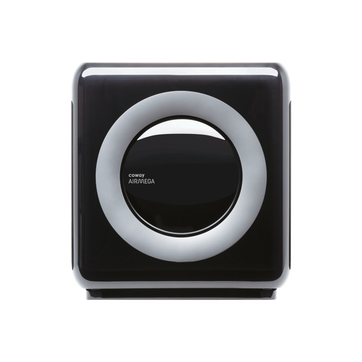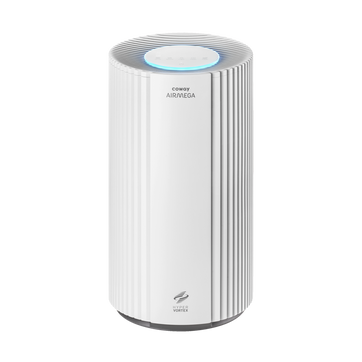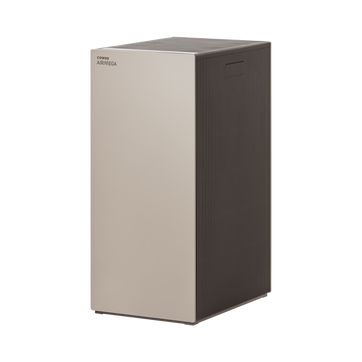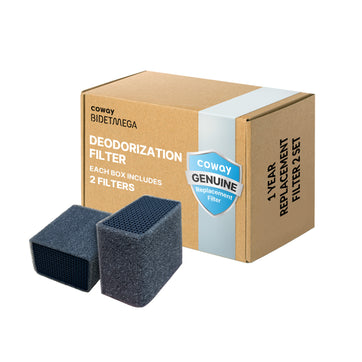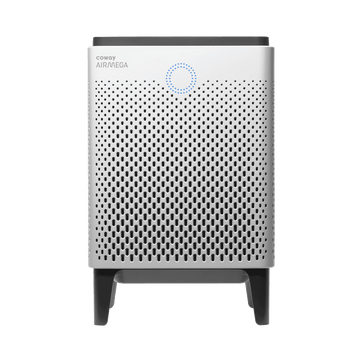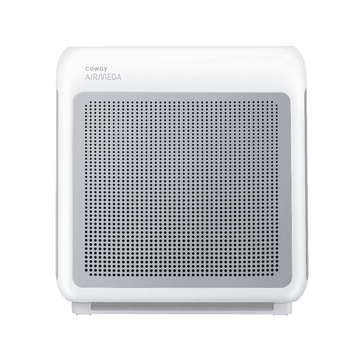
Do Air Purifiers Help With Smell? Everything You Need to Know
As the seasons change and homes are sealed against the elements, many people notice odors lingering longer than they would in open air. From cooking odors in the kitchen to pet odors that cling to furniture and must odors in damp basements, unwanted smells can quickly reduce comfort indoors. This raises a common question: do air purifiers help with smell?
The short answer is yes. With the right filter technology, air purifiers can significantly improve indoor air quality and reduce the presence of odors. However, not every air purifier is designed to handle gases, which means understanding how they work is crucial before you buy.
What Causes Household Odors?
Household smells don’t just appear out of nowhere. Most unpleasant odors come from small chemical compounds that disperse into the air. These compounds are often known as volatile organic compounds (VOCs).
VOCs are gases released from a wide variety of sources: cleaning products, paint, adhesives, smoke, food preparation, and even human activity. Because these chemicals easily evaporate at room temperature, they travel through the air and spread from room to room. The presence of volatile organic compounds VOCs not only leads to bothersome smells but can also impact health by irritating the respiratory system.
In addition to VOCs, everyday smells are tied to odor molecules released by bacteria, mold spores, and pet dander. Left unchecked, these compounds contribute to poor air quality and create an environment that feels less fresh and less healthy. These everyday concerns have led to increased popularity of in-home air purifiers.
Do Air Purifiers Really Get Rid of Smells?
A common misconception is that all air purifiers automatically eliminate odors. In reality, whether air purifiers help depends on the type of filter included.
-
Air purifiers with only HEPA filters will improve general indoor air quality by removing allergens and particles but won’t fully capture gaseous smells.
-
Air purifiers that include carbon filters or specialized deodorization layers are far more effective at targeting smells directly.
If you want an air purifer specifically for odor control, look for one that combines both. For example, the Coway Airmega 250S uses a dual-filtration system to remove airborne particles and trap gases at the same time. Similarly, the Blueair SmokeStop™ filter is known for tackling smoke and chemical odors.
In short, yes, air purifiers help with odors, but only if you choose the right technology.
How Air Purifiers Help With Smell
Air purifiers are devices designed to circulate and clean the indoor air in a given space. While their primary purpose is often removing airborne contaminants like dust, pollen, and smoke, many models are built to handle odors as well.
So, how exactly do air purifiers remove smells? The answer lies in their filtration systems. Most air purifiers use a combination of HEPA filters and carbon filters to target different pollutants.
-
HEPA Filters – These are designed to capture 99.97% of fine particles as small as 0.3 microns, including pet dander, pollen, mold spores, and dust mites. While high efficiency particulate air (HEPA) technology is excellent for particle control, it does not directly absorb gases.
-
Carbon Filters – Activated carbon has a porous structure that effectively traps gases and VOCs, making it the most important component for odor removal. A carbon air purifier can capture food odors, must odors, smoke, and chemical smells that a HEPA filter would miss.
When used together, air purifiers with HEPA filters and carbon filters create a comprehensive system that both cleans the air of particulates and absorbs the gases responsible for odors.
The Science of Odor Removal
At the core of odor elimination lies chemistry. Most unpleasant smells are caused by gases and microscopic compounds circulating through your living space. Standard filters are excellent for trapping particles, but gases require a different approach. That’s where air purifiers with activated carbon filters come in.
Activated carbon is treated in a way that creates millions of tiny pores, giving it a massive surface area compared to its size. As air passes through the air purifier, gases cling to the carbon’s porous structure through a process known as adsorption. This is why activated carbon filters are the gold standard for homes dealing with unpleasant smells on a daily basis.
When paired with high efficiency particulate air filtration, the combination becomes even stronger. HEPA technology removes allergens, spores, and airborne particles, while activated carbon filters capture volatile organic compounds and odor molecules that slip through traditional media. Together, they create a comprehensive solution that can significantly eliminate odors and restore comfort.
Common Sources of Odors at Home
Understanding where smells come from helps you position your air purifier for maximum impact. Here are the main culprits:
1. Cooking Odors
Kitchens are one of the biggest sources of unpleasant odors. Frying, baking, or roasting releases oils, fats, and smoke that contribute to odor molecules in the air. Even with good ventilation, cooking odors can cling to curtains, upholstery, and clothing. While range hoods help, only an air purifier with activated carbon filters can capture the microscopic compounds responsible for lingering aromas.
2. Mold and Must Odors
Damp environments such as basements, bathrooms, and laundry areas often harbor mold and mildew. These organisms release VOCs that create that familiar must odor many homeowners dread. A HEPA filter combined with activated carbon can help, though it’s important to also address the underlying moisture problem.
3. Smoke
Smoke contains both gases and airborne particles, making it one of the hardest smells to eliminate. Cigarette smoke, wildfire smoke, or even fireplace residue leaves persistent odors. Specialized purifiers like the Blueair SmokeStop™ filter are designed to capture both.
4. Pets
Furry companions bring love and smells. Pet odors come from dander, hair, saliva, and accidents. Over time, pet dander releases VOCs that add to the odor problem. The best approach is a purifier equipped with HEPA filters for dander and carbon filters for VOCs. The Coway Airmega Icon is an example of a purifier well-suited for pet-heavy homes.
How Carbon Filters Work Against Odors
The effectiveness of a carbon air purifier lies in adsorption. Activated carbon is treated to create millions of tiny pores. When air flows through, gases and VOCs become trapped in these pores, effectively removing the compounds responsible for unpleasant odors.
Because carbon filters fill up over time, they need more frequent replacement than HEPA filters. If your air purifier seems less effective against smells, it’s usually a sign the carbon is saturated. Choosing an air purifier model with an easy replacement design saves time and ensures consistent performance.
HEPA Filters: Essential for Particles, Not Smells
While carbon filters handle gases, HEPA filters are still essential. Without them, your air purifier would allow particles like dust, pollen, mold spores, and pet dander to remain in circulation. Together, they form a complete defense system:
-
HEPA filters trap solid airborne particles.
-
Carbon filters absorb VOCs and odors.
For example, the Coway Airmega 400 uses a three-stage system with a pre-filter, HEPA filter, and carbon filter, making it effective against both allergens and odors.
Do Air Purifiers Remove Smells from Every Room?
Placement matters. To maximize odor control:
-
Use an air purifier sized appropriately for the room. A unit too small won’t handle all the air volume.
-
Place the air purifier near the source of the odor: the kitchen for cooking odors, the living room for pet dander, or the basement for must odors.
-
Run the air purifier continuously in spaces with recurring smells.
Remember: while air purifiers remove smells, they won’t solve the root cause of mold, smoke, or spills. Use them as part of a larger odor-control strategy.
Air Purifiers in Different Environments
While most people think of air purifiers as a household appliance, their impact extends far beyond the living room. Different spaces present unique challenges, and understanding how an air purifier functions in each setting can help you choose the right model and filter type.
Apartments and Condos
Shared walls and limited ventilation mean smells travel easily between units. A neighbor’s food smells or lingering smoke smell can quickly invade your space. Compact units with activated carbon filters are particularly useful in apartments because they capture volatile organic compounds drifting through shared air systems while improving general air quality in tight quarters.
Offices and Workspaces
In offices, printers, cleaning products, and building materials often release volatile organic compounds VOCs that create unpleasant smells and impact concentration. A mid-size air purifier equipped with activated carbon can absorb these gases, helping to freshen indoor air and maintain a more comfortable environment for employees.
Schools and Daycares
Children are especially sensitive to unpleasant smells caused by airborne particles and gases. In these environments, activated carbon filters paired with high efficiency particulate air technology provide dual protection: odor control plus allergen reduction. Properly sized purifiers placed in classrooms can reduce musty odors and promote healthier breathing.
Gyms and Fitness Centers
Workout facilities are notorious for unpleasant smells created by sweat, cleaning chemicals, and recycled air. Larger air purifiers with deep beds of activated carbon are well-suited for these spaces. By continuously cycling the air, they help eliminate odors while also removing dust and particulates that accumulate from high traffic.
Across all these environments, the right combination of HEPA and activated carbon filters makes the difference between merely masking odors and truly capturing them.
Improving Air Quality Beyond Odor Control
While odor removal is the main focus, an air purifier also enhances your overall air quality. Cleaner air means fewer allergens, fewer VOCs, and better respiratory health. For sensitive groups such as children, seniors, or those with asthma, the improvement in air quality can make a noticeable difference.
In addition to removing pollutants, the process helps freshen indoor air. When VOCs and gases are captured by activated carbon, the room feels cleaner and lighter, even if you can’t pinpoint the source of the original smell. This is why many homeowners run their air purifiers year-round: it’s not just about odor, but about the daily benefits of breathing healthier, fresher air.
Choosing the Best Air Purifier for Odors
When shopping for the best air purifier, focus on these features:
-
Dual Filtration – A combination of HEPA filters and carbon filters ensures both particle and gas removal.
-
Filter Size and Capacity – Larger filters last longer and capture more airborne particles.
-
Easy Maintenance – Look for purifiers with quick filter replacement systems.
-
CADR Rating – A higher Clean Air Delivery Rate means the purifier can cycle more air per hour, improving effectiveness.
-
Brand Reputation – Models like the Coway Airmega 100 or Blueair SmokeStop™ series are trusted for reliable odor control.
Tips for Maximizing Odor Control
An air purifier works best when it’s used strategically. To ensure your device captures the widest range of unpleasant smells, keep these tips in mind:
-
Placement matters: Put your air purifier near the source of odors, such as the kitchen for food smells or the basement for musty odors.
-
Size appropriately: Choose a model rated for your room size. Undersized units won’t process enough air to make a noticeable difference.
-
Replace filters regularly: Activated carbon becomes saturated over time, reducing its ability to capture VOCs. Following the manufacturer’s replacement schedule keeps performance high.
-
Combine with cleaning habits: An air purifier is most effective when paired with basic practices like vacuuming, wiping surfaces, and controlling humidity.
By combining purification with household habits, you ensure odors are tackled from every angle.
Maintenance and Longevity of Air Purifiers
Owning an air purifier isn’t a one-time solution; it requires upkeep to remain effective. The lifespan of your device depends largely on how often you maintain and replace the filters.
Why Activated Carbon Needs Regular Replacement
Unlike a permanent filter, activated carbon becomes saturated as it adsorbs gases and VOCs. Once full, it loses the ability to trap unpleasant smells. For households with pet odor or heavy cooking, activated carbon filters may need replacement every three to six months. If you notice musty odors or food smells lingering even while the purifier is running, it’s a sign the filter has reached capacity.
HEPA vs. Carbon Longevity
High efficiency particulate air filters typically last longer than carbon because they trap solid debris rather than gases. However, clogged HEPA media restricts airflow and reduces overall efficiency. Replacing both activated carbon filters and HEPA filters on schedule ensures the purifier continues to improve indoor air quality.
Easy Maintenance Features
Modern designs make filter changes straightforward. Many purifiers now include filter replacement indicators, washable pre-filters, and slide-out trays for activated carbon packs. These features make it simpler to maintain performance and continuously freshen indoor air.
Extending Device Life
Routine care extends the life of your machine. Wipe down vents, vacuum the intake area, and keep the purifier in an open space for proper circulation. A well-maintained air purifier can last for years, consistently reducing unpleasant smells and supporting healthier indoor air.
Frequently Asked Questions
Do air purifiers help with smell from pets?
Yes. A purifier with HEPA filters for dander and an activated carbon filter absorbs gases and compounds that cause lingering odors from fur, litter boxes, or accidents. This dual system works by trapping allergens while also trapping odor molecules, which results in reducing unpleasant odors throughout the home. Unlike temporary solutions like air fresheners, air purifiers deliver consistent air purification that improves health as well as comfort.
Do air purifiers remove smells completely?
They can significantly reduce odors but may not eliminate every trace, especially if the source (like mold) is still active. However, for smoke odors, strong odors from cooking, or recurring pet odors, the right combination of air filters makes a noticeable difference. It’s also important to pair your purifier with proper ventilation, since clean airflow helps prevent lingering odors from settling into fabrics and surfaces.
Do air purifiers help with smell from musty basements?
Yes, especially when paired with a dehumidifier. A purifier with HEPA and activated carbon filters can capture VOCs, spores, and gases that create musty odors. Together, this combination enhances air purification and supports long-term improvements in air quality.
In Conclusion
Odors are more than just an inconvenience; they signal the presence of VOCs, odor molecules, and airborne particles that impact your health and comfort. The good news is that modern air purifiers help combat these issues effectively.
By combining HEPA filters and carbon filters, today’s purifiers address both particles and gases. Whether you’re battling pet odors, smoke, or must odors, the right device can transform your indoor air quality.
While no purifier is a magic bullet, choosing the best air purifier for your space makes a measurable difference in freshness and well-being. And when paired with good cleaning and ventilation habits, an air purifier becomes one of the most valuable tools for maintaining a healthy, odor-free home.
Sources:
NCB News - Ooooh, that smell! Odors rise with the temperature
Minnesota Pollution Control Agency - Volatile organic compounds (VOCs)
Center for Disease Control - What are environmental odors: frequently asked questions
Environmental Protection Agency - Guide to Air Cleaners in the Home
Disclaimers
1Coway air purifiers have been proven to trap dust, pollen, dander, viruses and bacteria in the air based on KCL (Korea Conformity Laboratories) testing.They have been tested in a 30㎥ size chamber according to the Korea Air Cleaning Association standard (SPS-KACA 002-132:2022 Modified) to measure the 0.01㎛ size of particle removal rate. It was tested on maximum airflow speed in normal room temperature and humidity conditions. The performance may vary in the actual living environment of customers.
→ Tested with Airmega Aim, 50, 100, 150, 160, Tower AP-1216L, Mighty AP-1512HH, MightyS AP-1512HHS, 200M, Icon, IconS, 230, 240, 250, 250 Art, 250S, 300, 300S, 350, 400, 400S, 450, ProX
299.97% of viruses, bacteria, fungi and pollen were verified to be removed from the air for Coway air purifiers which have Green True HEPA™ filter applied based on the Japan Food Research Laboratories(JFRL) testing according to JEM 1467 standard.
→ Tested with Coway Airmega Mighty AP-1512HH, MightyS AP-1512HHS, 250, 250 Art, 250S, 300, 300S, 400, 400S
→ All tested by JFRL and received above result within below time.
4The concentration of ammonia, acetaldehyde and acetic acid were proven to be removed within 30 minutes by FCG Research Institute, Inc. Human Life Science Lab. It is not a demonstration result in the actual use space. Not all odors and gases may be supported. → Tested with Coway Airmega 150, 160, Mighty AP-1512HH, MightyS AP-1512HHS, 400, 400S
5The coverage area of the air purifier is based on an area where the air cleaner can make two air changes per hour (ACPH). An air change per hour translates to how many times an air purifier can clean an area, assuming the height of a ceiling to be 8 ft, in one hour. Therefore ** means two air changes per hour means that the cleaner can clean the area once every 30 minutes and * means air changes per hour means that the air purifier can clean the area once every 60 minutes.
10Terms and conditions apply. Discounts, including promotions, coupons, bundle discount and subscription discount, cannot be stacked on top of other coupons. During promotional periods, discount codes will not be able to be applied to orders. Promo codes may apply to products only—filters, accessories, and new products within 3 months of the release date are not included.
11Based on Coway R&D internal laboratory testing, activated carbon filtration was shown to remove up to 95% of ammonia odors within 40 minutes, and up to 99% of fecal odors within 20 minutes. Actual performance may vary depending on usage conditions.

